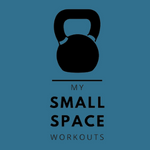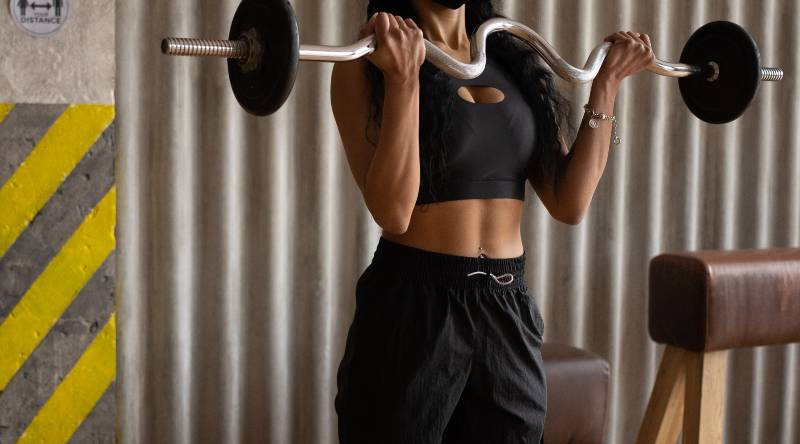We’re here to tell you that while bicep curls may give you a temporary pump in your chest muscles, they likely won’t be the most effective exercise for targeting and strengthening your pectorals. Don’t get us wrong, bicep curls are great for building those beefy guns, but if you’re feeling them in your chest then something isn’t right. In this blog post, we’ll delve into the science behind bicep curls and their impact on the chest, as well as provide some tips to ensure your bicep workout doesn’t become a bizarre chest workout!

Why Bicep Curls May Not Be the Best Choice for Chest Development
Bicep curls are a classic exercise for building and strengthening the biceps muscles, but they may not be the best choice for targeting and developing the chest muscles.
While it’s true that any exercise that involves lifting weights can potentially engage and stimulate muscle growth in various areas of the body, the chest muscles (also known as the pectorals) are primarily activated through exercises that involve pressing or pushing movements.
One of the main reasons why bicep curls may not be the most effective exercise for chest development is because they primarily target the biceps muscles, which are located on the front of the upper arm.
While the biceps do play a role in chest exercises like the bench press, they are not the primary muscle group being worked. They are certainly a helpful exercise for strengthening and toning the biceps, they are definitely not the most effective choice for targeting and developing the chest muscles.
If you’re looking to build a defined and toned chest, it’s important to incorporate exercises that specifically target the pectorals, such as the bench press, push-ups, dips, and flyes.
By including a variety of exercises that focus on different muscle groups and using a combination of heavy weights and high reps, you can effectively stimulate muscle growth and achieve the results you’re looking for.
So Why Do I Feel Bicep Curls in My Chest?
If you’ve ever done a set of bicep curls and felt a burn or pump in your chest muscles, you might be wondering why this is happening. While it’s true that bicep curls are primarily a biceps exercise, there are a few reasons why you might feel them in your chest as well.
One reason for this is muscle activation. When you perform any exercise, multiple muscle groups are typically engaged to some extent, even if the primary focus is on a specific muscle group.
For example, when doing bicep curls, the biceps are the main muscle group being worked, but the forearms, shoulders, and even the chest muscles may also be activated to a lesser extent.
This is especially true if you’re using a heavier weight or if you’re performing the exercise with poor form, which can cause other muscle groups to compensate and become more involved.
Finally, it’s possible that you’re simply feeling the effects of the bicep curls on your overall upper body muscles, including the chest. When you perform any exercise, it’s normal to feel a certain level of fatigue and soreness in the muscles that were worked.
If you’re doing bicep curls as part of a full upper body workout, it’s likely that you’ll feel the effects in multiple muscle groups, including the chest.
In conclusion, while bicep curls may not be the most effective exercise for targeting and strengthening the chest muscles, it’s normal to feel them in your chest to some extent, especially when lifting heavy, due to muscle activation and the overall effects of the exercise on the upper body.
If you’re looking to focus on your chest specifically, it’s important to incorporate exercises that specifically target the pectorals, such as the bench press, push-ups, dips, and flyes.
How to Properly Incorporate Bicep Curls Into Your Overall Workout Routine
Bicep curls are a classic exercise for building and strengthening the biceps muscles, and they can be a valuable addition to your overall workout routine.
However, it’s important to properly incorporate bicep curls in order to maximize their effectiveness and avoid overloading or neglecting other muscle groups. Here are a few tips for properly incorporating bicep curls into your workout routine:
Don’t make bicep curls your primary chest exercise: While bicep curls can provide some benefits for the chest muscles, they are primarily a biceps exercise and should not be the primary focus of your chest workout. Instead, focus on exercises that specifically target the chest, such as the bench press, push-ups, dips, and flyes.
Include bicep curls as part of a full upper body workout: Rather than isolating the biceps in a separate workout, it’s generally more effective to include bicep curls as part of a full upper body workout that includes exercises for multiple muscle groups. This will help to ensure that you’re not overloading or neglecting any one muscle group.
Vary the type of bicep curls you perform: There are many different variations of bicep curls, including dumbbell curls, barbell curls, and cable curls. By incorporating a variety of bicep curl exercises into your routine, you can target the biceps from different angles and provide a more well-rounded muscle development.
Use proper form: Proper form is crucial for any exercise, but it’s especially important when it comes to bicep curls. Make sure to keep your elbows close to your sides, avoid swinging or using momentum, and use a weight that allows you to complete the full range of motion without straining.
Don’t neglect other upper body muscles: While it’s important to focus on specific muscle groups during your workouts, it’s also important to maintain a balance and ensure that you’re not neglecting other muscle groups. Make sure to include exercises for the shoulders, triceps, and back in addition to your bicep curls.
By following these tips, you can effectively incorporate bicep curls into your overall workout routine and achieve well-rounded muscle development in the upper body.
Which Bicep Curls Are Best?
Based on the results of this study, it appears that the EZ barbell curl was the most effective variant for activating the bicep and brachioradialis muscles, while the dumbbell curl was less effective.
The EZ variant is preferred over the dumbbell curl variant for both the whole phase of the repetition and the eccentric phase for both muscle groups. The difference between the barbell curl and EZ variants was small, so the choice between these two variants may depend on personal preference and comfort with the handgrip position.
In terms of the rep range you should be targeting for your bicep curls, this scientific review casts doubt on the existing paradigm that low reps and heavy weight are best for strength and growth.
The study concludes that there is no ideal “hypertrophy zone” for muscle growth and development, as similar muscle growth can be achieved through a range of loading ranges starting at around 30% of 1RM.
However, moderate loads may be the most efficient and effective means of achieving muscle development because light load training requires more repetitions and time, and can cause discomfort, while heavy load training requires more sets and can increase the risk of joint-related stress and overtraining.
Combining loading ranges may also have a potential benefit for muscle growth, but more research is needed to confirm this.
Bicep Curls Gone Wrong: How to Avoid Turning Your Arm Workout Into a Pec-Tastrophe
In conclusion, bicep curls can be a valuable exercise for building and strengthening the biceps muscles, but they may not be the most effective choice for targeting and developing the chest muscles.
While bicep curls may provide some benefits for the chest muscles due to muscle activation and the overall effects of the exercise on the upper body, they are primarily a biceps exercise and should not be the primary focus of your chest workout.
If you’re experiencing a pump in your pecs while doing bicep curls, it’s important to check your form to ensure that you’re properly targeting the biceps muscles.
While it’s normal for other muscle groups to be activated to a certain extent during any exercise, the chest muscles should not be the primary focus when doing bicep curls.
Additionally, if you’re using a weight that is too heavy, it can be difficult to properly isolate the biceps muscles and you may end up relying on other muscle groups to compensate.
In this case, it may be helpful to lower the weight and focus on proper form and technique. Remember, it’s important to challenge yourself with a moderate weight that allows you to complete the full range of motion without straining.
As we’ve seen, moderate weight can be just as effective as a heavier weight for building muscle size and strength, as long as you’re using proper form and challenging yourself with an appropriate number of reps.

